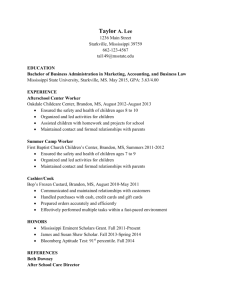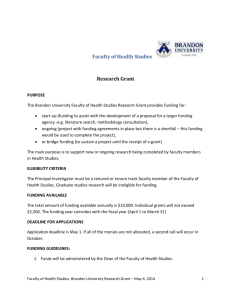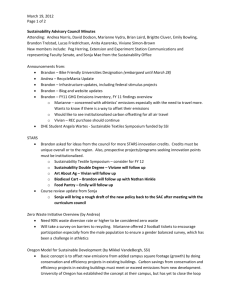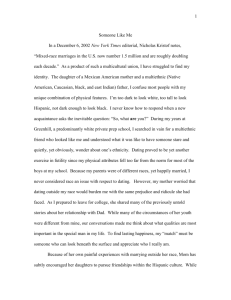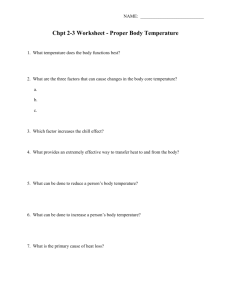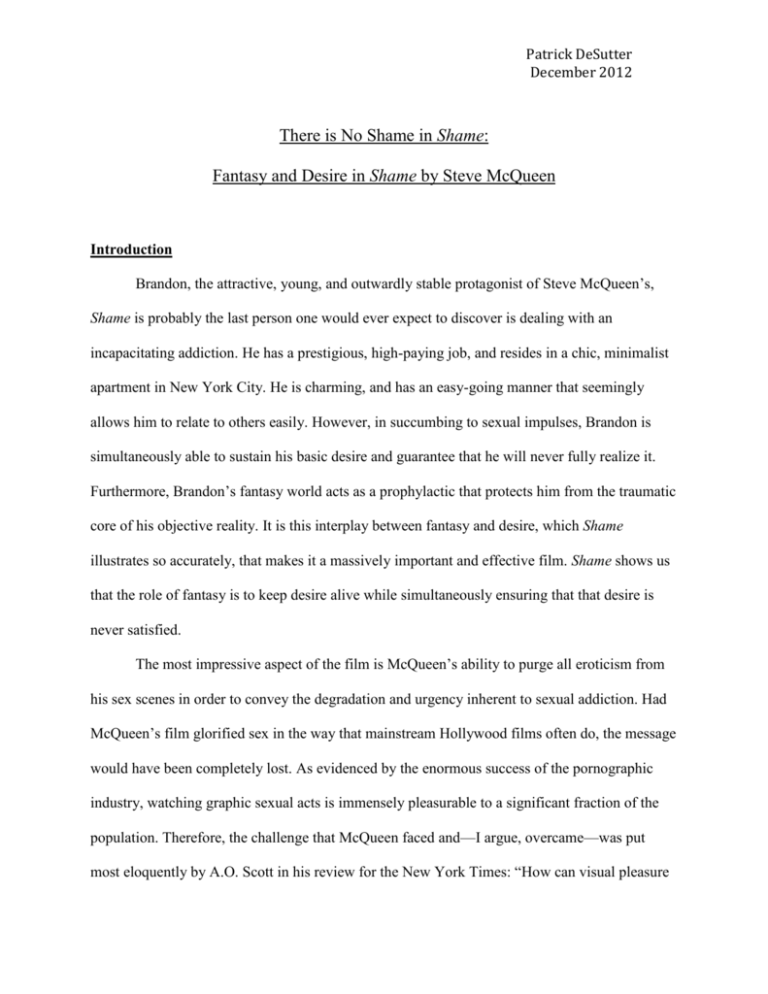
Patrick DeSutter
December 2012
There is No Shame in Shame:
Fantasy and Desire in Shame by Steve McQueen
Introduction
Brandon, the attractive, young, and outwardly stable protagonist of Steve McQueen’s,
Shame is probably the last person one would ever expect to discover is dealing with an
incapacitating addiction. He has a prestigious, high-paying job, and resides in a chic, minimalist
apartment in New York City. He is charming, and has an easy-going manner that seemingly
allows him to relate to others easily. However, in succumbing to sexual impulses, Brandon is
simultaneously able to sustain his basic desire and guarantee that he will never fully realize it.
Furthermore, Brandon’s fantasy world acts as a prophylactic that protects him from the traumatic
core of his objective reality. It is this interplay between fantasy and desire, which Shame
illustrates so accurately, that makes it a massively important and effective film. Shame shows us
that the role of fantasy is to keep desire alive while simultaneously ensuring that that desire is
never satisfied.
The most impressive aspect of the film is McQueen’s ability to purge all eroticism from
his sex scenes in order to convey the degradation and urgency inherent to sexual addiction. Had
McQueen’s film glorified sex in the way that mainstream Hollywood films often do, the message
would have been completely lost. As evidenced by the enormous success of the pornographic
industry, watching graphic sexual acts is immensely pleasurable to a significant fraction of the
population. Therefore, the challenge that McQueen faced and—I argue, overcame—was put
most eloquently by A.O. Scott in his review for the New York Times: “How can visual pleasure
communicate existential misery?”1 While Scott claimed that McQueen was not able to
accomplish this extraordinary task, I will demonstrate, by presenting three crucial scenes, that
McQueen’s masterful use of distanciating techniques allowed him to portray vividly sexual
images that disturb, rather than arouse, viewers. McQueen’s portrayal of sex addiction in Shame
is successful in its attempt to eliminate eroticism from the sexual act, demonstrating to viewers
that sex addiction turns this source of pleasure into an unrelenting, exigent need.
Scene #1 (11:11-16:43)
The first particularly significant scene in Shame is shown relatively early in the film. We
see an establishing shot of Brandon returning to his apartment. Then inside, his torso is the only
part of his body seen in the shot as he puts on an old piano record and opens some leftover
Chinese food and a beer at his kitchen table. Brandon then sits down and opens his computer to
watch pornography while he eats. A jump cut ostensibly brings us minutes into the future. While
Brandon is still engrossed in fantasy, his sister calls and leaves a highly theatricalized message
claiming that she is dying of cancer and begging to talk with him. Visibly upset by the abrupt
intrusion, Brandon ignores the call and returns his gaze to the computer screen.
The shots in this brief sequence are consciously avant-garde,2 and clearly meant to
distanciate the viewer and prevent the viewer from engaging emotionally with Brandon. Without
a single close-up shot in the entire sequence, it is impossible for the viewer to identify with
Scott, A.O. “Only One Thing On His Mind.” New York Times. December 1, 2011.
Avant-garde cinema refers to “aesthetically challenging, noncommercial films that selfconsciously reflect on how human senses and consciousness work or explore and experiment
with film forms and techniques” (Corrigan, 469).
1
2
2
Brandon.3 The shot of Brandon at his dinner table is a long shot from his left side. The distance
created in this shot doesn’t allow us to engage with his emotions, but forces us to meticulously
scrutinize his actions.
The fact that Brandon is eating dinner while watching pornography is significant to the
scene as well. Food here should be read as a metaphor for the way that Brandon seems to be
‘consuming’ pornography for his own sustenance rather than deriving any enjoyment from it.
Brandon’s fantasy has become a need rather than a source of pleasure. In the same way missing a
meal would begin to gnaw at him after a few hours, forgoing his usual routine of pornography
would eat away at Brandon and hollow him out. While his fantasy does not provide Brandon
with pleasure so much as it does provide sustenance, fantasy does serve a protective function for
Brandon. Brandon indulges in this pornographic routine and lives inside of this fantasy space to
avoid confronting the trauma that defines his reality. This idea has been advanced by Lacan who
compares fantasy to a frozen image: “just as the film may be stopped at a certain point in order to
avoid showing a traumatic scene which follows, so also the fantasy scene is a defense.”4 This is
theme is illustrated in the way that Brandon ignores his sister’s phone call. He is shaken by the
abrupt intrusion of reality into his fantasy space and immediately recoils to within his protective
fantasy.
The action cuts to the following day and we watch Brandon at work. His workday
sequence includes a singularly important shot of a female coworker that Brandon spends his days
fantasizing about. In the blurry shot, the camera pans to the right across the bare back and neck
Close up shots often indicate, “nuances of the character’s feelings or thoughts or [suggest] the
special significance of an object” (Corrigan, 109). This technique is exemplified by Dreyer’s The
Passion of Joan of Arc (1928), which utilized close-ups of characters’ faces to portray their
fervent emotion (Corrigan, 167).
4 (Handout, 60)
3
3
of the woman as well as the side of her face. The camera just catches her eye and mouth before
she disappears out of frame.
The blurry quality of the shot indicates that it is Brandon’s fantasy image. The protective
function of fantasy is illustrated because Brandon feels that this blurriness allows him to inspect
this feminine subject without being subjected to a similar objectifying gaze. However, this tells
us that Brandon is in fact being protected from realizing his own desire—the desire for genuine
reciprocal intimacy. The sexual fantasy prevents Brandon from attaining his desire. This shot is
also instrumental in illustrating masculine sexual demand. This shot seems to be meticulously
analyzing the female form. In a sense, she is being violently dismembered by Brandon’s fantasy
objectification of her. Furthermore, the camera seems to pause just briefly on her mouth. This is
significant because of Brandon’s masculine fetishization of the mouth as an orifice that is
uniquely designed for his pleasure. McQueen captures masculine sexuality—the demand that this
body provide me with gratification—in this one simple shot.
This sequence is also important for its disjunctive editing and distanciating effects. Firstly,
minimal use of non-diegetic sound is an important way of distancing the viewers from the action
and forcing them to critically and objectively interpret the action in the scene.5 The conspicuous
lack of background music throughout the scene is important to note. Indeed, background music
opens us to “experience the movie as immediate and enveloping. It encourages us to let our
barriers down.”6 Without any score music, viewers are keenly aware of their physical and
temporal separateness from the action of the film, and do not make as intimate connections with
the characters.
Non-diegetic sound is, “sound that does not have an identifiable source in the characters’
world and that consequently the characters cannot hear” (Corrigan, 476).
6 (Corrigan, 196)
5
4
The last sequence of the scene features Brandon, his boss—David, and some other
friends at a bar. David is the most vocal and aggressive in the group about going after women.
Approaching an unenthusiastic woman sitting at the bar, David unabashedly hits on her while
Brandon watches apologetically. Once again, the meaning of this sequence is contained in the
distanciating effects used by McQueen to make the viewer feel uncomfortable. The most
noticeable effect in this sequence is the violation of the ‘180-degree rule.’ The 180-degree rule is,
“a central convention of continuity editing that restricts possible camera setups to the 180-degree
area on one side of an imaginary line drawn between the characters or figures of a scene. If the
camera were to cross the line to film from within the 180-degree field on the other side, onscreen
figure positions would be reversed.”7 This spatially disorienting technique is used to
intellectually, rather than emotionally, engage the viewer.
Scene #2 (50:30-56:35)
In this scene, Brandon is on a date with Marianne, the woman that he was fantasizing
about in the office in the previously mentioned scene. The date gets off to an awkward start when
Brandon tells Marianne that he doesn’t believe in relationships. McQueen cuts to a shot from
outside of the restaurant and we can no longer hear the conversation. After dinner, Brandon
walks Marianne to the subway station. Along the walk, Brandon poses an interesting rhetorical
question to Marianne, “if you had a choice to live in the past or the future, and you could be
anything you wanted to be, what would you be?” The character’s answers to this question are
critical indicators of their desires and fantasies and the lighting and editing techniques in this
scene add important meaning to the film.
7
(Corrigan, 476)
5
An important aspect of this scene is the still camera throughout the time that Brandon and
Marianne are conversing at the dinner table in the restaurant. The stationary camera holds the
viewer at arms length; it keeps the viewer from getting emotionally involved with the scene. 8
Once again, McQueen is forcing the viewer to engage intellectually, rather than emotionally,
with his scene.
Additionally, the lighting technique used in this sequence creates meaning for the film.
The walk from the restaurant to the subway station is exceptionally dark. In fact, for much of the
scene, the characters are invisible or only vaguely visible in shadowy silhouettes. By diminishing
the lighting, McQueen created the space in which the characters were forced to vocalize their
demands because the darkness creates an environment where only their voices are capable of
communicating their feelings. Brandon, referring to himself as a ‘remnant of the Neanderthals,’
is vocalizing his demand for instant sexual gratification. The darkness of the scene adds an
important level of anonymity that allows him to freely embrace such ideas. The urban landscape
supplements this effect. The set becomes a sort of sexualized primal hunting ground in
Brandon’s mind.
While the darkness signifies that Brandon feels sufficiently anonymous to vocalize his
demands, it also reminds the viewer that Brandon’s true desires are concealed even to himself.
His true desire, reciprocal intimacy, is deemed unattainable by his constant demand for sexual
gratification and his instinctive retreat into fantasy space.
This scene is telling because of the way it so clearly illustrates Brandon’s demand for
instant gratification. This is evidenced through his actions and words throughout the scene. First,
through the entire dinner sequence, Marianne’s gaze was focused squarely on Brandon. However,
8
(Corrigan, 126)
6
Brandon was unable to return her gaze and is usually seen staring at the table or off into another
part of the restaurant. This signifies Brandon and Marianne’s irreconcilable differences in their
desires. When Brandon claims that if he had the freedom to be anyone at any point in history, he
would be a musician in the 1960s, he is expressing his unconscious desire to live in a world
where the unregulated pursuit of instant gratification is widely accepted. His answer tells us that
Brandon is looking for a temporary fix to satisfy his unquenchable lust for sexual gratification. It
tells us that he is incapable of conceiving a perspective outside of his own narrow paradigm. His
choice of the 1960s did not seem to take into account Marianne’s race, and the negative effects
living in the 1960s would have for her. Even when Marianne muses that, “the 60s is like the last
place I’d want to be,” Brandon does not seem to recognize this racial component. Conversely,
Marianne desires something else. His inability to sympathize with Marianne correlates with their
incongruent desires.
Marianne answers Brandon’s question by claiming that, even if she could go to any point
in the past or future, she would rather be “here, now.” Her answer suggests that her true desire
was the date itself. She wants commitment and true, reciprocal intimacy. While this is Brandon’s
underlying desire as well, his impulse to revert to fantasy makes him incapable of realizing this
similarity. While Brandon sees the date as a means to an end: as the foreplay to acting upon his
animalistic urges after dinner, Marianne sees the date as the ends in itself.
Scene #3 (1:09:49-1:16:00)
This scene features Brandon having an intimate conversation with his sister. She returns
home to find Brandon watching cartoons by himself. She sits down on the couch next to Brandon,
and they have a long conversation. Brandon claims that he is ‘disgusted’ by his sister for
7
sleeping with his boss, Dave. He tells her that Dave is married with children, and she denies
knowing this. Brandon tells Sissy that she needs to find somewhere else to live, and denies any
responsibility for taking care of her. This scene also features Sissy making a veiled reference to
Brandon’s sex life, at which point Brandon storms out of the room.
This scene repeats some of the important distanciating techniques that were used earlier.
The distanciation is used by McQueen to eliminate any eroticism from the sex scenes. His use of
similar techniques in non-sex scenes is useful because it prevents the audience from identifying
emotionally with the main characters. This makes the sex scenes all the more graphic and
disturbing. Importantly, McQueen repeats his use of the still camera and the long take. Again,
the audience is being held at arm’s length and not allowed to engage emotionally with the
characters. McQueen goes to even greater lengths in this scene by not showing the characters’
faces. Instead, the entire conversation is filmed from behind, so the audience is only allowed to
see the back of Brandon and Sissy’s heads.
One of the most important images from this scene is the blurred image of the cartoon that
is on the television throughout the entire sequence. The television shows a perpetually repeating
clip of an object bouncing. This image represents the fact that, through his sex addiction,
Brandon is being kept alive by repetitive, compulsive mechanical failures. It conveys the
message that by constantly demanding instant sexual gratification and living in his fantasy space,
Brandon has turned into a type of zombie. The blurriness of this image also recalls the fantasy
image of Marianne from the first scene mentioned in this essay. In that scene, the blurred image
represented the protective function of fantasy. I this scene, the very shallow depth of field 9 even
more clearly indicates that what Brandon’s fantasy is really protecting him from is what he wants
Depth of field refers to the “range or distance before and behind the main focus of a shot
within which objects remain relatively sharp and clear” (Corrigan, 471).
9
8
the most. He cannot achieve transparency and intimacy with those that actually love him the
most because of his interminable demand for sexual gratification.
This scene also features Brandon recoiling away when reality intrudes into his fantasy
space. Brandon tells Sissy that he is ‘disgusted’ by her choice to sleep with his married boss. His
disgust reflects the Lacanian notion that disgust is simply the over-proximity to ‘the Real.’
Brandon is not truly disgusted by Sissy, but is terrified of his own behavior. It is an instance of
reality intruding on his fantasy space. His sister’s presence in his apartment clearly represents the
intrusion of reality, and Brandon vocalizes this message when he claims that Sissy ‘traps’ him.
Brandon feels compressed by his sister on one side and his overpowering addiction on the other
side. Just like when Sissy interrupted his fantasy space through her phone message in the first
scene, Brandon reacts negatively and has to revert back to his fantasy space. However, this time
he returns to fantasy not simply by turning back to his computer, but by leaving for a sex binge
that would result in his ultimate tragic downfall.
Conclusion
Shame does a masterful job of portraying the paradoxical nature between demand, desire,
and fantasy through a narrative focusing on a man struggling to cope with sex addiction and
maintain his interpersonal relationships. Although he built his fantasy space to protect him from
trauma, what Brandon truly desired was what he was protecting himself from and ensuring that
he would never attain: genuine reciprocal intimacy, love. Through distanciation, McQueen
prevents viewers from engaging emotionally with Brandon. This allows him to show explicitly
sexual images that do not arouse his audience. Instead, such graphic images disturb the audience
and give him the impact he was looking for.
9
Works Cited
Corrigan, Timothy, and Patricia White. The Film Experience: An Introduction. 2nd e. Boston:
Bedford/St Martin’s, 2009.
Scott, A.O. “Only One Thing On His Mind.” New York Times. 1 December 2011.
10


